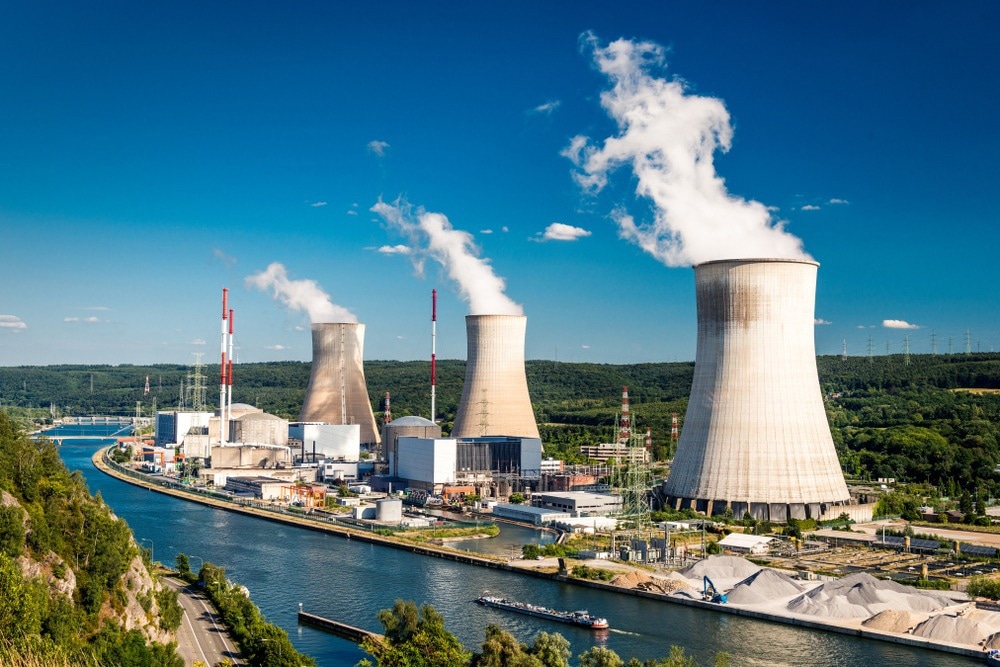In a paper recently published in the open-access journal Energies, researchers reviewed different perspectives of the models and methodologies used in determining the probability of nuclear power plant (NPP) accidents.

Study: Accident Modeling and Analysis of Nuclear Reactors. Image Credit: engel.ac/Shutterstock.com
Nuclear Energy and its Safety Challenges
Owing to its high reliability and energy density and exceedingly low greenhouse-gas emissions, nuclear energy will play a key function in fighting global climate change. As of August 2022, 439 nuclear reactor units were in operation producing about 30% of the total minimum carbon electricity produced in the world. Countries such as the USA, France, and China believe that nuclear energy would be one of the important approaches to attaining carbon neutrality between 2050-2060.
However, nuclear safety has always been challenging in developing NPPs. The NPP accidents such as the Three Mile Island (1979), Chornobyl (1986), and the Fukushima disasters (2011) have led to tremendous fatality and monetary costs due to high radioactive releases and the subsequent remediation work. Therefore, the modeling and assessment of NPP accidents have become necessary for reactor license applications and system design.
NPP Modeling Parameters
The two main dimensions for studying nuclear accidents are the likelihood of the incident and the extent of its consequences. These parameters often complement each other by codetermining the degree of importance of the accident in designing plant safety. With advancements in computing technologies, modeling and assessment of NPP accidents can achieve real accident circumstances with minimum approximation, thus providing reliable analysis of the accidents.
In this review, the team covered eight research papers and several technological aspects, varying from the analysis of external accidents such as earthquakes to internal accident analyses like station blackouts (SBO), hydrogen explosions, and steam explosions, from a dynamic probabilistic risk assessment model to a fuzzy fault tree technique, and from fuel failure modeling to thermal-hydraulic modeling.
NPP Accident Analysis
The natural disaster that poses the most severe threat to the structure of the NPPs is an earthquake. Zhu et al. investigated the effect of several ratios of differential vertical equivalent damping of three-dimensional combined isolation bearing (3D-CIB) on the isolation effectiveness and seismic response. It was determined that the isolation effectiveness could benefit from an increased vertical equivalent damping ratio, while a 3D-CIB with a vertical equivalent damping ratio between 15-20% was acceptable in terms of controlling the displacement.
A study by Frano et al. modeled an internal accident caused due to SBO, where the power deficit failed to activate safety injection systems. It was observed that an SBO incident could collapse an aged reactor pressure vessel (RPV) in less time. On the other hand, radiator leakage and destruction of the RPV can be caused by steam and hydrogen explosions.
Park et al. carried out a study on a steam explosion that occurred in the NPP of the APR -1400 in Korea, due to the discharge of the melt to the cooling water outside from the reactor cavity’s core. They combined the finite element (FE), steam explosion code, and transient analysis code for explosive reactions (TRACER-II) to evaluate the reactor cavity’s structural integrity. Moreover, Kang et al. developed a model to evaluate the APR-1400’s containment integrity during a hydrogen explosion set off by an SBO incident.
Accident Probability Assessment
The probabilistic safety assessment (PSA) is carried out by the most extensively used fuzzy fault tree analysis method. A PSA conducted by Hermansyah et al. used this method to resolve the issue of insufficient historical data and evaluate the reliability of the components. However, numerous issues remained in the PSA, which could be overcome by using the dynamic probabilistic risk assessment (PRA) method.
The analysis of a nuclear accident requires key modeling technologies for fuel and thermal-hydraulic failures. An OpenFOAM-based transient 3D model proposed by Hamdani et al. pointed out that an improved pressure and temperature prediction could be enabled by accurate modeling of the containment vessel’s conjugate heat transfer.
Moreover, Shah et al. proposed a technique for fuel failure’s dynamic assessment to evaluate the risks associated with accident-tolerant fuel (ATF) under various scenarios that included high-pressure as well as low-pressure accidental conditions. It was observed that the highest safety margin was provided by SiC-type ATF with flexible coping strategies (FLEX).
Sources
Wu, J.; Chen, J.; Zou, C.; Li, X. Accident Modeling and Analysis of Nuclear Reactors. Energies 2022, 15, 5790. https://www.mdpi.com/1996-1073/15/16/5790
Zhu, X.; Li, J.; Lin, G.; Pan, R. Influence of Vertical Equivalent Damping Ratio on Seismic Isolation Effectiveness of Nuclear Reactor Building. Energies 2021, 14, 4602 https://www.mdpi.com/1996-1073/14/15/4602
Lo Frano, R.; Cancemi, S.A.; Darnowski, P.; Ciolini, R.; Paci, S. Preliminary Analysis of an Aged RPV Subjected to Station Blackout. Energies 2021, 14, 4394. https://doi.org/10.3390/en14154394
Park, S.-H.; Bang, K.-H.; Cho, J.-R. Structural Integrity Evaluation of a Reactor Cavity during a Steam Explosion for External Reactor Vessel Cooling. Energies 2021, 14, 3605. https://doi.org/10.3390/en14123605
Kang, H.S.; Kim, J.; Hong, S.W.; Kim, S.B. Numerical Analysis for Hydrogen Flame Acceleration during a Severe Accident in the APR1400 Containment Using a Multi-Dimensional Hydrogen Analysis System. Energies 2020, 13, 6151. https://doi.org/10.3390/en13226151
Hermansyah, H.; Kumaraningrum, A.R.; Purba, J.H.; Edison; Yohda, M. Safety Analysis Technique for System with Limited Data: Case Study of the Multipurpose Research Reactor in Indonesia. Energies 2020, 13, 1975. https://doi.org/10.3390/en13081975
Hamdani, A.; Abe, S.; Ishigaki, M.; Sibamoto, Y.; Yonomoto, T. Unsteady Natural Convection in a Cylindrical Containment Vessel (CIGMA) With External Wall Cooling: Numerical CFD Simulation. Energies 2020, 13, 3652. https://doi.org/10.3390/en13143652
Shah, A.U.A.; Christian, R.; Kim, J.; Kim, J.; Park, J.; Kang, H.G. Dynamic Probabilistic Risk Assessment Based Response Surface Approach for FLEX and Accident Tolerant Fuels for Medium Break LOCA Spectrum. Energies 2021, 14, 2490. https://doi.org/10.3390/en14092490
Disclaimer: The views expressed here are those of the author expressed in their private capacity and do not necessarily represent the views of AZoM.com Limited T/A AZoNetwork the owner and operator of this website. This disclaimer forms part of the Terms and conditions of use of this website.